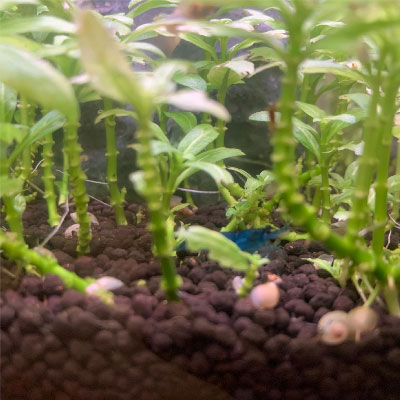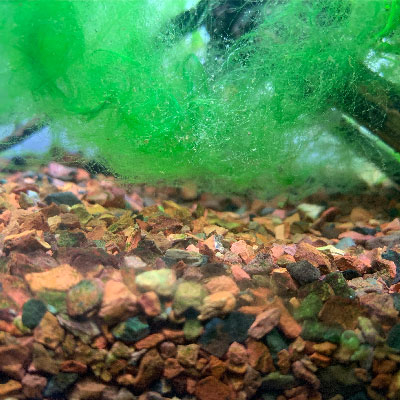Eco-Complete vs Flourite: Which Is Better?
Posted by on 4/11/2023
CaribSea's Eco-Complete and Seachem's Flourite are two of the most popular substrates in the freshwater aquarium hobby. If you're in the planning stage of an aquarium, both of these substrates have a lot to offer but are vastly different in appearance.
In this post, we'll compare the two substrates, and we'll recommend different types of hardscape and plant options so that you can build the perfect planted tank.
Choosing the Right Substrate
There's no shortage of substrates to choose from in the freshwater aquarium hobby. Nutrient-rich substrates aid in plant growth and even play sand is used as an affordable substrate option.
While many hobbyists may make their substrate decision based on appearances alone, other factors such as granule size play an important role in an aquarium's ecosystem, particularly for those looking to build a planted aquarium.
Some of our favorite planted tank substrates include CaribSea's Eco-complete and Seachem's Flourite, let's review some of the value these substrates provide.
🛒 Shop Freshwater Fish on Light Fish
CaribSea's Eco-Complete
Eco-Complete's dark brown coloration and small-sized nutrient-rich granules make it a favorite of ours.
We've already featured the substrate on our lists of best substrates for cherry shrimp and discus.
Carpeting plants such as dwarf baby tears, dwarf hairgrass, or staurogyne repens contrast beautifully with this volcanic soil. Stem plants, such as hygro and rotala hra will root with ease, a great benefit for hobbyists with a large volume of background plants.
Hardscape options such as Mopani driftwood, and seiryu stone contrast nicely with this dark-colored substrate.
All in all, it's a versatile substrate that adds a natural-look to any aquarium.

Seachem's Flourite
Flourite has an orange and red coloration that works well for hobbyists looking to build an aquarium with a mid-western aesthetic.
Seachem's Flourite has much larger granule sizes when compared to eco-complete and does not provide any nutrients.
Due to the larger granule size, it may take a bit longer for plants to take root in Flourite, but most healthy plants will eventually anchor. Flourite is a clay-based substrate, and its granules pair nicely with deep green plants, such as java fern, guppy grass, and anubias frazeri. Darker-colored driftwoods, such as Malaysian driftwood also look fantastic in a Flourite aquarium.

Best for Hobbyists on a Budget
Hobbyists looking to be as budget-conscious as possible should go with Eco-Complete.
A 20-pound bag of eco-complete should be about $10 or so cheaper than Fluorite, plus planted tank hobbyists will temporarily benefit from the nutrients included in the substrate.
Best for Planted Tanks
Planted tank hobbyists will enjoy the granule size and nutrients provided by eco-complete, which will allow plants to anchor with ease.
We think a black-colored substrate looks fantastic when paired with a brightly-colored carpeting plant, but don't let that deter you from trying Fluorite as well. Beauty is in the eye of the beholder!
Our Recommendation
For hobbyists new to planted tanks, we recommend Eco-Complete. It's a natural-looking substrate that makes tank maintenance a breeze.
However, Fluorite also works well for different types of aquascapes.
If you plan on growing a lot of red aquatic plants, go with eco-complete to create a nice-looking visual contrast. If you plan on maintaining green, low-light aquatic plants such as java fern go with Flourite.
Conclusion
As you can see, both Flourite and Eco-Complete are attractive substrates that are similar in price. Hobbyists should consider the color of any hardscape or future plants they plan on adding to choose which substrate may create the most visual contrast.
In reality, you'll likely be happy with either one of these options, and if budget allows, why not go with both? You can split the tank down the middle with play sand, and have one side be eco-complete and the other Flourite. Let us know what you plan on doing with these substrates in the comments, and be sure to visit our marketplace, where you can buy and sell anything related to aquariums with other hobbyists.
December's Giveaways on Light Fish














